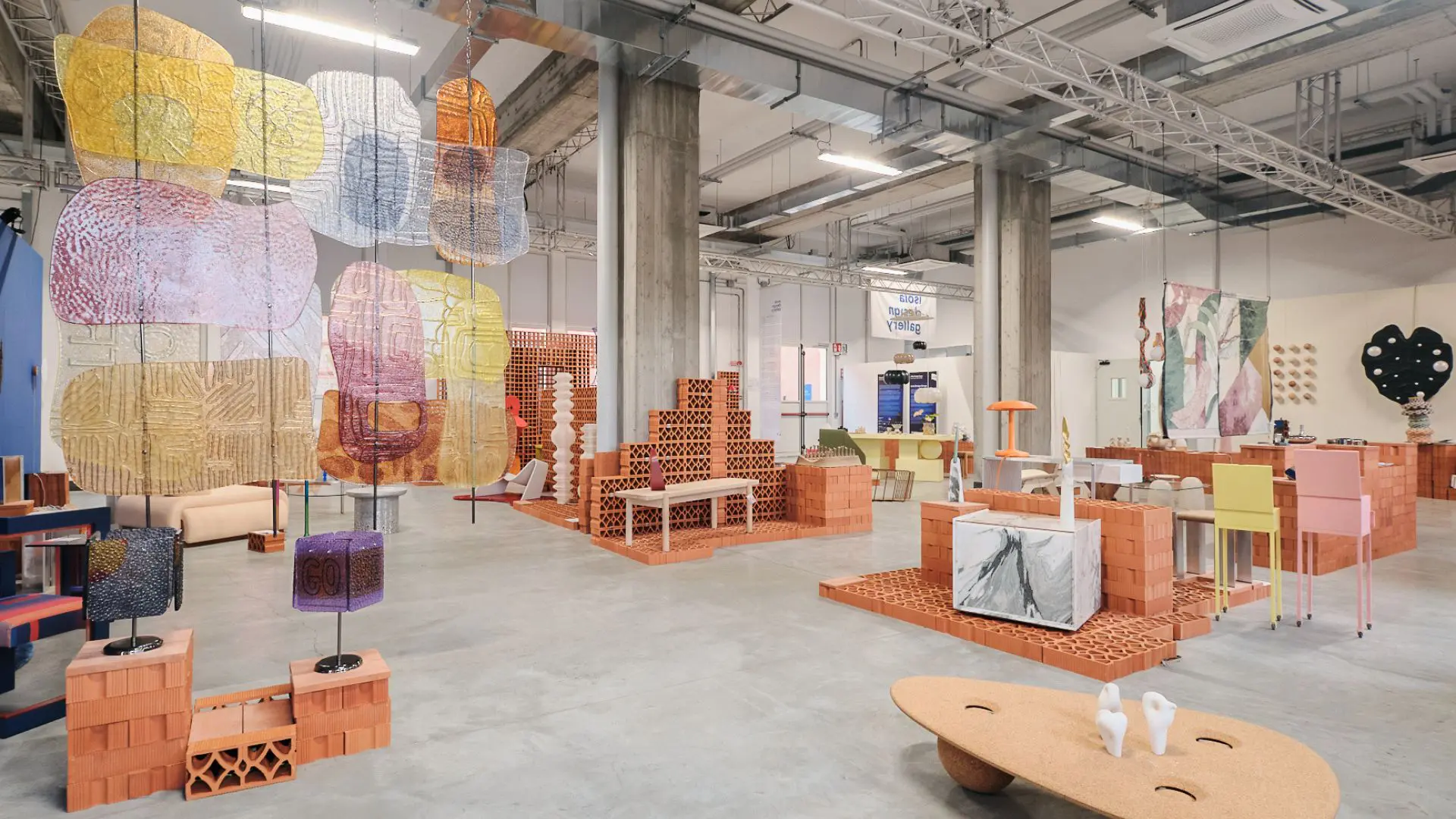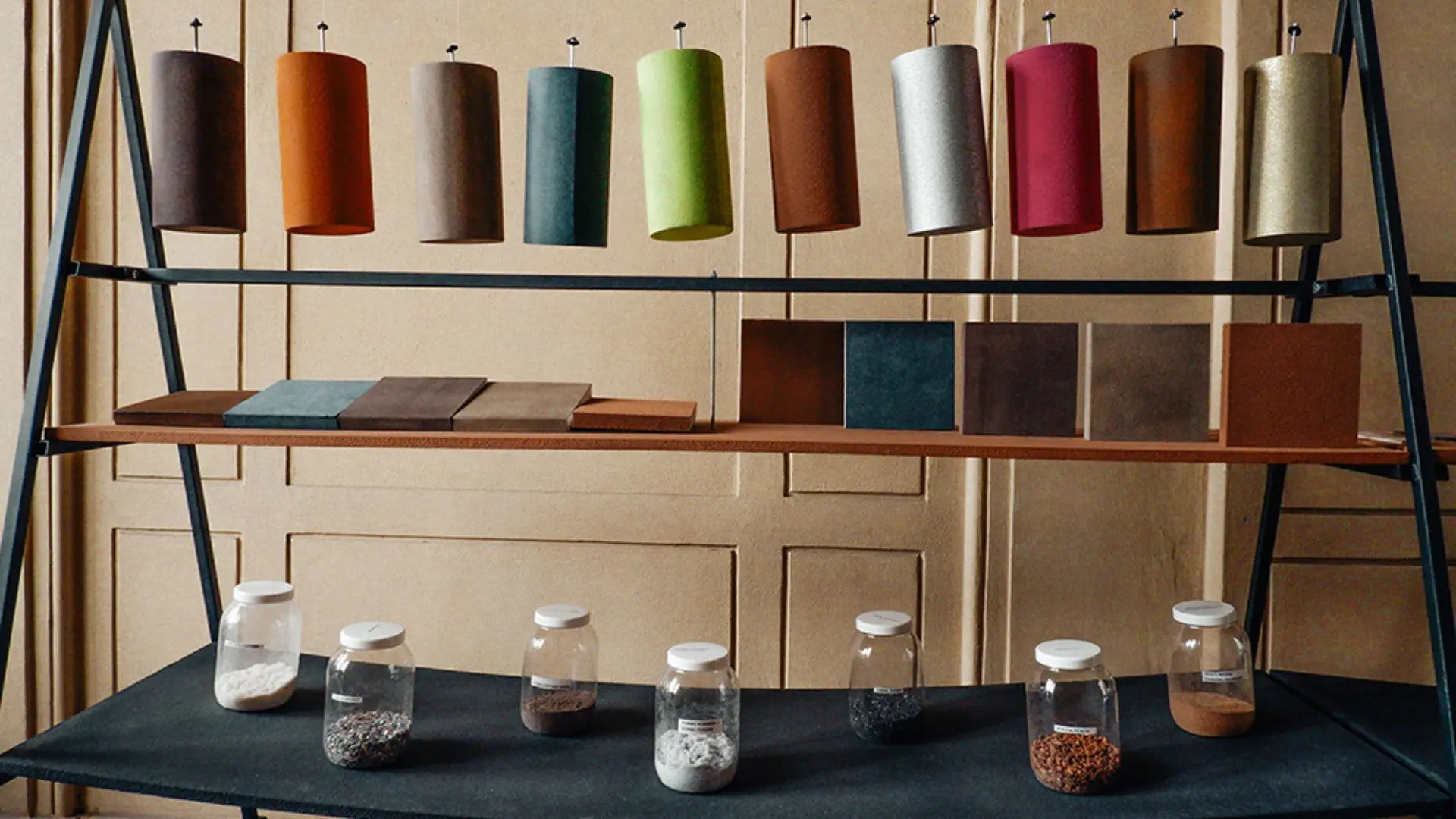Edible insects are the future according to BeoBia
With this new insect pod, BeoBia makes it easy to sustainably grow and harvest high protein mealworms in your own home.
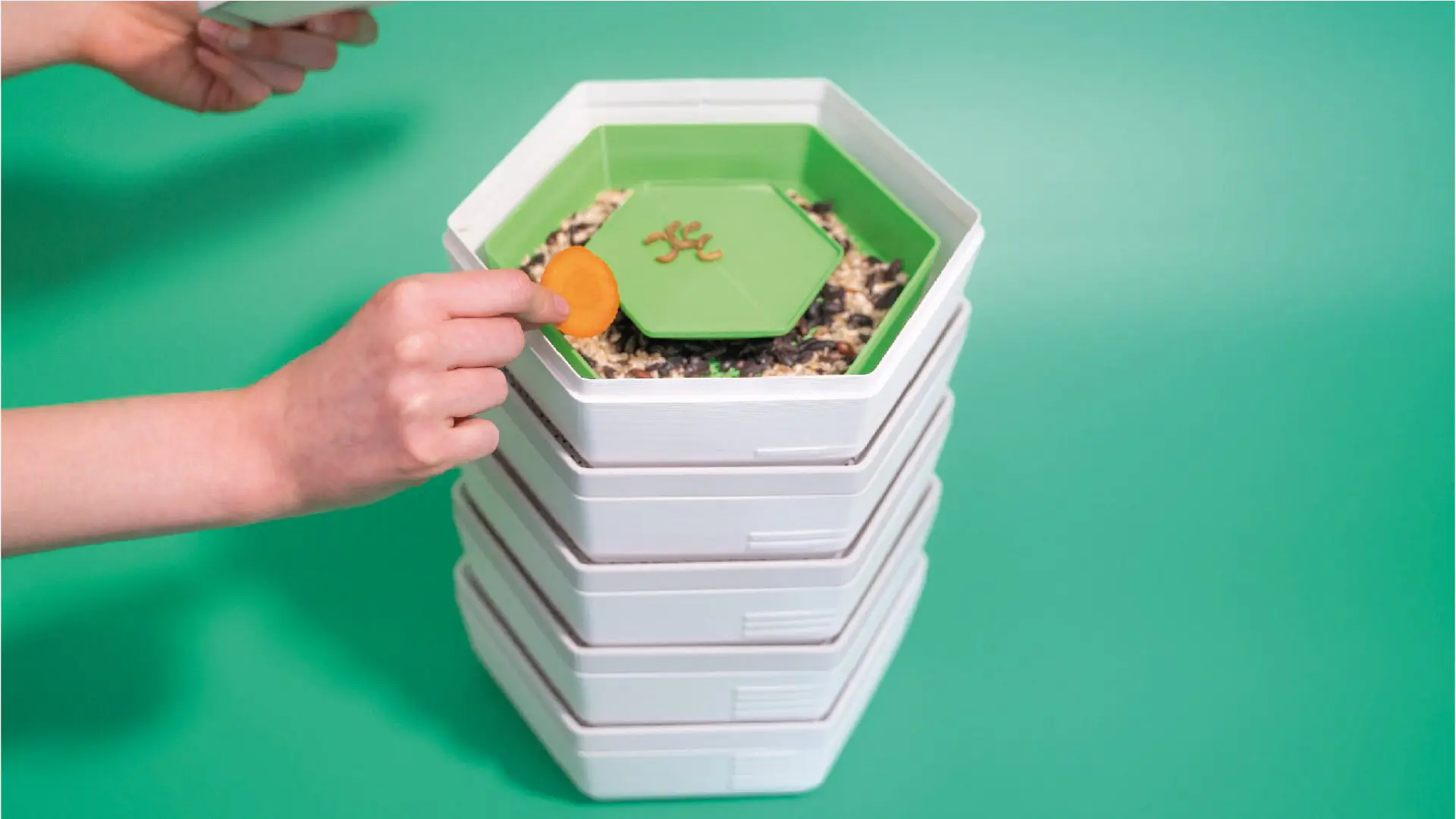
People are now more likely to be concerned with where their food originates and how it is produced. BeoBia leads a change in attitude about the consumption of insects and empowers people to produce their own sustainable source of protein.
The current meat production industry is being called out for its huge environmental impact and its ability to meet the demands of our ever-growing population is questioned. This has seen plant-based diets and alternative protein sources become more popular.
Edible insects may be a perfect answer to these concerns. Insects are rich in protein, polyunsaturated fats, minerals and vitamins. And, with a very low carbon footprint, can be sustainably produced in small spaces. Although more than 2 billion people eat insects across the globe, they are almost completely off the menu in modern western societies.

Mealworms are the larva stage of the darkling beetle. According to BeoBia, they are “gram for gram, over 22,000 times more water-efficient than beef, 1140x more ammonia efficient than pigs”.
The mind behind BeoBia – Thomas Constant
Thomas is a London based designer. He completed studies in Industrial Design and Technology at Loughborough University. Following time as a freelance designer and several design internships, he works as Head of Design for Heylo.
In early 2019 he founded BeoBia (now The Bug Factory) after learning of the huge impact that the meat production industry has on the planet. It was an ideal way to combine his design skills and ecological interests.
Materials and techniques – A 3D printed mealworm breeder
To spearhead the sustainable food revolution, BeoBia has designed Re_. This is a mealworm breeding pod created to be used in the home. The pod is 3D printed using fully recycled bioplastics derived from plant starches. Keeping in mind the complete life cycle of the product, Re_ can be industrially composted.
The mealworm life cycle can be fed with food waste, and each harvest of mealworms will be around 100-300 grams. That might seem relatively small. However, when you consider that mealworms contain 54% protein, it represents a significant source of nutrition. BeoBia say that their design, manufacturing and shipping all happen from a single location. This helps to keep their own carbon footprint to a minimum.
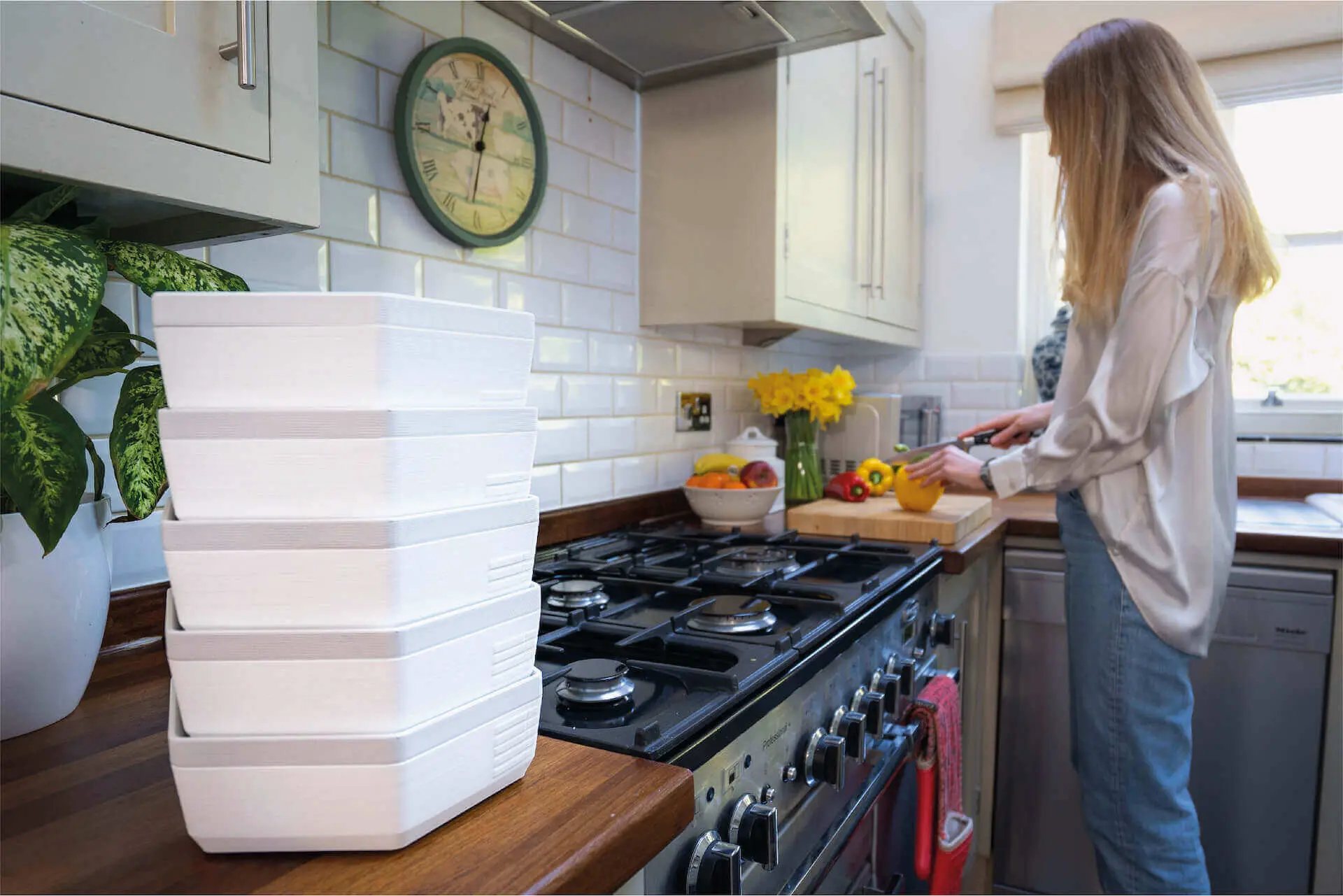
Style & aesthetics – A discreet stack of hexagons
In the development of Re_, it has undergone several iterations. The design has been honed to create a form that doesn’t draw attention to its purpose and can be easily placed anywhere around the home. The breeding pod consists of 5 tiers of simple, white hexagonal trays. On the side of each tray is a series of bars, marking the different layers by number.
In the process of breeding mealworms, the beetles are moved from one tray to another. Tray 2 has a raised green platform inside. This is the home where the pupae are placed. Once they transition into beetles, they hatch and will crawl off to lay their egg in the beetle tray.

Overcoming the ‘Ick’ Factor
There is no denying that the thought of eating insects makes many people start to squirm. And, since we are talking about food, taste is one of the first questions on everyone’s mind. Just what does a mealworm taste like? Beobia describes them as being much like almonds.
Aly Moore of Bugible goes into a bit more detail. She notes their nutty, crunchiness and says: “their aroma is musty or earthy, reminiscent of the smell of parsnips pulled fresh from the ground. As such, one could say their flavour is close to lightly salted parsnip crisps.”
So, you could be pleasantly surprised.
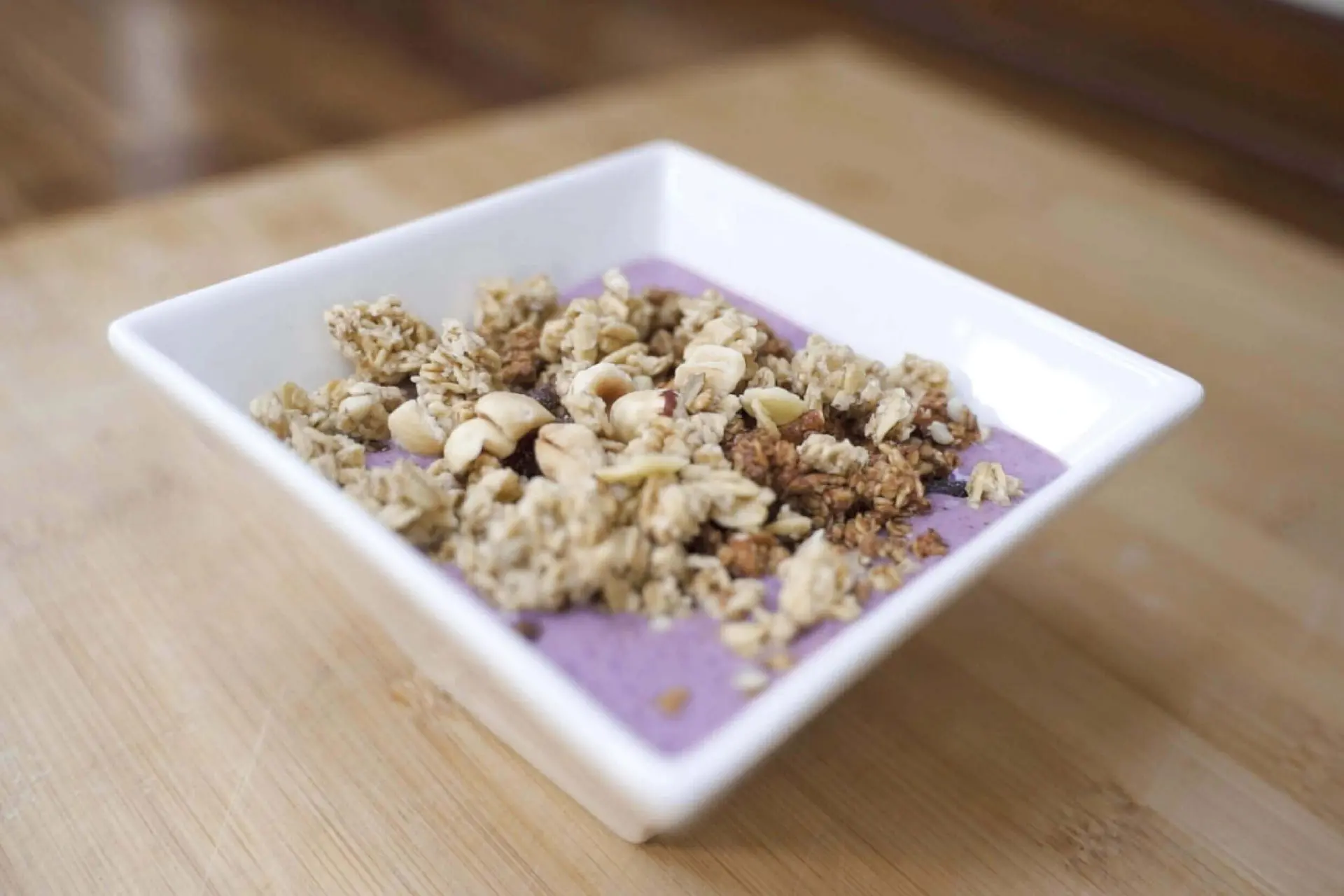
Design memento – Bridging the gap between idea and reality
The arguments in favor of eating insects—entomophagy—are compelling. There are clear environmental benefits and insects are dense with high-quality nutrients. Plus, there is the promise of using and reducing your own food waste and being more self-sufficient.
Alas, the transition from argument to uptake is not a straight-line. What BeoBia does is to bridge this gap. The Re_ offers a practical and easy way for people to start introducing insects into their diet. It provides a clear path on how to achieve something which might otherwise seem too daunting to realistically contemplate.
There are many thousands of different insects that can be safely consumed by humans. By identifying one insect which is easy to grow and tasty, BeoBia eliminates the need to choose or research. As the system is designed specifically for growing and harvesting to eat, it gives people confidence and makes the whole idea feel more comfortable.
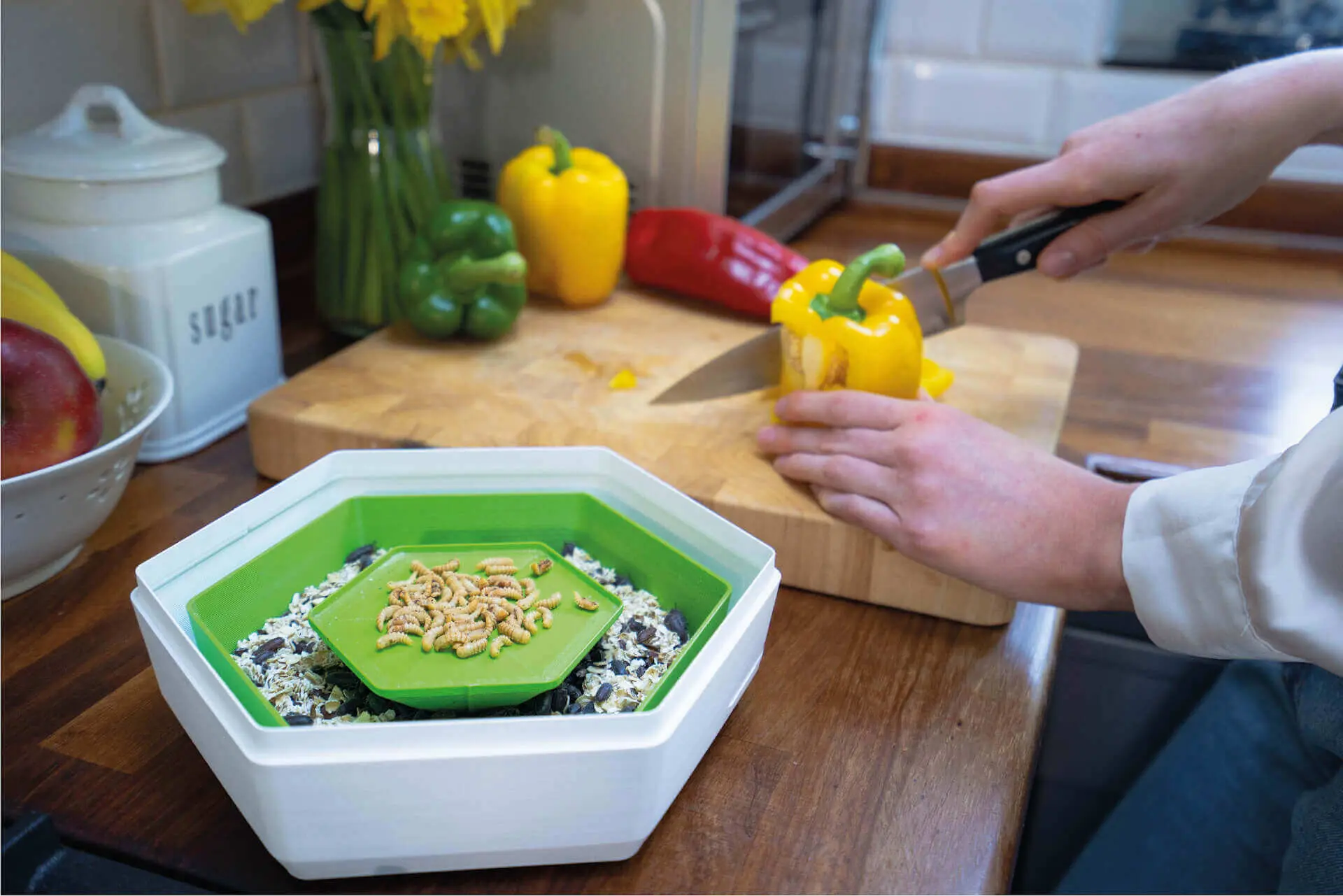
The writer’s comment – Instagramable insect dishes
The BeoBia Instagram feed seems to hit the right vibe for the audience of young urban dwellers. It centers tasty looking food and doesn’t shy away from showing the insects. And, insect power is treated like a sprinkle on or mix in superfood.







